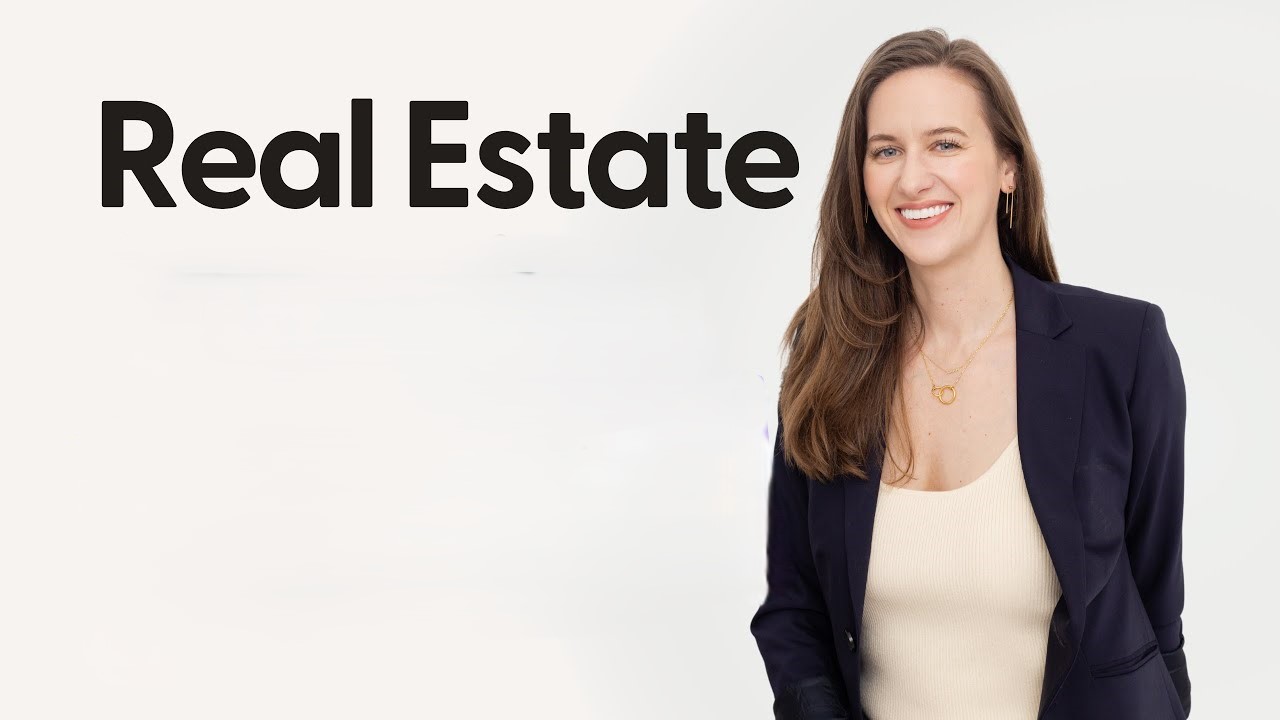Real Estate
Risk Management: Which Investment Option is Safer, Real Estate or Stocks?

Introduction
Welcome to our blog where we discuss the age-old question: which investment option is safer, real estate or stocks? As investors, we are constantly seeking ways to grow our wealth and secure our financial future. When it comes to investing, risk management is crucial, as it helps us make informed decisions that minimize potential losses. In this post, we’ll analyze the pros and cons of real estate and stock investments and help you choose the right path for your investment goals. So buckle up as we embark on an insightful journey into the world of risk management!
Real Estate
Real estate has long been considered a safe investment, but is it really any safer than investing in stocks? When it comes to risk management, both real estate and stocks can be risky investments. However, there are ways to minimize the risk of both options.
For example, with real estate, you can diversify your portfolio by investing in different types of property, such as residential, commercial, or industrial. You can also spread your risk by investing in different geographical areas. With stocks, you can diversify your portfolio by investing in different companies and industries. You can also spread your risk by investing in different countries.
No investment is completely safe, but diversifying your portfolio is one of the best ways to reduce risk. By investing in both real estate and stocks, you can balance your portfolio and reduce your overall risk.
Stocks
When it comes to investing, there are a lot of options to choose from. Two of the most popular options are stocks and real estate. Which one is the safer investment?
It depends on what you mean by safe. If you’re looking for an investment that is less likely to lose value, then stocks are a better choice. However, if you’re looking for an investment that will give you a steadier return, then real estate is a better choice.
There are pros and cons to both investments. Stocks tend to be more volatile, which means they can go up or down in value quickly. This can be good if the market is doing well, but it can also mean big losses if the market takes a turn for the worse. Real estate is less volatile, but it also doesn’t usually appreciate as much as stocks do in good markets.
The best way to choose an investment is to understand your own risk tolerance and invest accordingly. If you’re willing to take on more risk for the chance of higher rewards, then stocks may be the right choice for you. But if you want a steadier investment with less ups and downs, then real estate may be a better option.
Which is the better investment?
There are a lot of factors to consider when trying to determine which investment is the better option. Real estate and stocks both have their pros and cons, so it’s important to carefully weigh all of your options before making a decision.
Here are a few things to keep in mind when considering which investment is right for you:
-Your goals: What are you hoping to achieve with your investment? If you’re looking to make a quick profit, then stocks may be the better option. However, if you’re looking for a more stable investment that will appreciate over time, then real estate may be a better choice.
-Your risk tolerance: Both real estate and stocks can be volatile investments, so it’s important to know how much risk you’re comfortable taking on. If you’re willing to take on more risk, then stocks may be the better investment. However, if you prefer a more stable investment, then real estate may be a better choice.
-Your time horizon: How long do you plan on holding onto your investment? If you’re planning on investing for the long term, then real estate may be the better option. However, if you’re looking to cash out quickly, then stocks may be the better choice.
Ultimately, there is no right or wrong answer when it comes to choosing between real estate and stocks. It all depends on your individual circumstances and what you hope to achieve with your investment.
How to diversify your portfolio
When it comes to investing, the old adage “don’t put all your eggs in one basket” rings true. Diversifying your portfolio is essential to mitigating risk and ensuring potential for growth. But how do you go about diversifying your investments?
There are many ways to diversify your portfolio, but two popular options are investing in real estate or stocks. Both have their own risks and rewards, so it’s important to understand each before making a decision.
Investing in real estate can be a great way to build long-term wealth. However, it’s important to remember that real estate is a physical asset and can be subject to market fluctuations. Additionally, there are costs associated with owning and maintaining property, such as taxes, insurance, and repairs.
Stocks, on the other hand, are more liquid than real estate and can be bought and sold relatively easily. They’re also less expensive to purchase than property. However, stocks can be more volatile than real estate, meaning their value can fluctuate more rapidly.
The best way to diversify your portfolio is to invest in both real estate and stocks. This way, you’ll mitigate some of the risks associated with each while still giving yourself the opportunity for growth.
Conclusion
All investments have inherent risks, but understanding the basics of risk management can help you make informed decisions about which option is safer for your portfolio. When it comes to real estate and stocks, both types of investments offer different levels of risk and reward. Ultimately, you’ll need to weigh all factors before making a decision on which one may be better for your financial security in the long run. With this knowledge in hand, you can confidently navigate the world of investing with more assurance that your money will remain safe and secure regardless of market conditions or trends.
Real Estate
Maximize Home Project Success with Residential Estimating Services

In residential construction and renovation, success often hinges on planning, accuracy, and cost control. Whether you’re a homeowner building from the ground up or a contractor bidding on remodels, having a clear understanding of project costs is crucial. This is where residential estimating services come into play. These specialized services provide comprehensive, itemized cost breakdowns that help streamline planning, avoid budget overruns, and ensure a smoother overall construction process.
Understanding the Role of Residential Estimating Services
Residential estimating services involve the systematic evaluation and projection of costs associated with residential construction projects. These services can cover everything from new builds and additions to kitchen renovations, roofing, and landscape upgrades. Unlike rough cost guesses or generic online calculators, professional estimating services take into account actual material prices, labor costs, local building codes, permit fees, and contingencies.
A well-prepared estimate becomes a vital reference document throughout the life of the project. It supports budget planning, contractor selection, and even loan applications. More importantly, it helps keep everyone accountable, from builders to subcontractors.
Why Accurate Estimates Matter More Than Ever
Construction costs have been fluctuating significantly in recent years due to inflation, material shortages, and supply chain issues. This unpredictability makes accurate cost estimation more critical than ever. Relying on outdated pricing models or guesswork can lead to major financial headaches, delays, and disputes between clients and contractors.
By investing in residential estimating services, you can avoid these issues. Professional estimators use the latest data and tools to provide realistic cost expectations based on your specific project scope and location. Whether you’re renovating a bathroom or constructing a multi-family property, these services bring essential financial clarity to the table.
The Process Behind Professional Estimating
The process of residential estimating services typically begins with a thorough review of your architectural plans, engineering drawings, or renovation concepts. Estimators then input this data into sophisticated estimating software that factors in thousands of variables. These include:
-
Square footage and layout complexity
-
Material choices (e.g., premium finishes vs. budget materials)
-
Local labor rates and union regulations
-
Building code requirements and permit costs
-
Equipment and subcontractor needs
-
Environmental or site-specific considerations
The result is a highly detailed estimate report, which outlines each cost element line by line. It’s not just about giving you a total number—it’s about breaking down how that number is reached so you can make better decisions and control spending.
Who Should Use Residential Estimating Services
While general contractors and developers are the most frequent users of residential estimating services, they are equally valuable for homeowners. Many individuals start construction or remodeling projects without a clear idea of how much things should cost. This can lead to sticker shock, change orders, or unfinished work due to lack of funds.
Homeowners using estimating services benefit from:
-
Realistic budget setting before starting the project
-
Enhanced ability to compare contractor bids
-
Increased confidence when securing financing
-
Reduced risk of unexpected expenses mid-project
Additionally, real estate investors and property managers who oversee multiple renovations or builds rely on professional estimates to ensure profitability and proper allocation of capital.
Key Benefits of Residential Estimating Services
Engaging professional estimating services adds a layer of security and expertise to any residential project. Some of the standout benefits include:
1. Cost Transparency:
Detailed reports mean there are no hidden charges or vague line items. You know exactly what you’re paying for.
2. Informed Decision Making:
With a full breakdown of expenses, clients can identify areas to cut costs or reallocate funds for better results.
3. Reduced Risk of Delays:
With accurate planning, contractors can schedule labor and material deliveries more efficiently, reducing downtime.
4. Better Communication:
When everyone—homeowner, contractor, architect—is working from the same cost estimate, collaboration is clearer and smoother.
5. Improved Contractor Selection:
Having a professional estimate in hand helps clients evaluate bids more objectively, preventing overpricing or underbidding issues.
Choosing the Right Estimating Partner
Not all residential estimating services are the same. Some firms specialize in high-end custom homes, while others focus on multi-family developments or green building projects. When choosing a provider, it’s important to assess their experience, accuracy, software tools, and familiarity with local building practices. Ask to see samples of past work, read reviews, and ensure they are licensed or certified if applicable in your region.
A good estimator will be transparent, communicative, and adaptable—willing to revise estimates as your project evolves or as material costs shift.
Conclusion
In the world of residential construction, success starts with knowledge—and that begins with accurate, professional cost estimation. Residential estimating services empower homeowners, builders, and investors to move forward with confidence, reduce financial risk, and keep their projects on track. With expert insights, up-to-date data, and meticulous planning, these services have become an essential part of the modern home-building process.
Whether you’re planning a small renovation or embarking on a large-scale build, don’t underestimate the value of getting your numbers right from the start. Invest in residential estimating services and build your future on a solid financial foundation.
Real Estate
How to Invest in Real Estate for Maximum ROI in 2025

Introduction
Investing in real estate can be a powerful way to grow wealth. In 2025, the market offers fresh opportunities for savvy investors. By using proven property investment strategies, you can achieve maximum ROI in real estate. This guide walks you through key steps from choosing the right market to financing your deal and from analyzing returns to managing risks.
Whether you’re a first‑time buyer or a seasoned veteran, these tips will help you invest smartly. Let’s explore how to make the most of the real estate industry market in 2025 and secure a strong real estate ROI.
What Is Real Estate ROI?

Image by: Yandex.com
Real estate ROI measures the return you earn on a property compared to the money you invest. It tells you if your investment is paying off. A higher ROI means more profit.
To calculate ROI, use this formula:
ROI (%) = (Annual Net Profit ÷ Total Investment) × 100
Annual net profit equals rental income minus expenses such as taxes, maintenance, and mortgage interest. Total investment includes your down payment, closing costs, and renovation expenses.
By tracking ROI, you can compare deals and pick the best ones. In 2025, focus on properties that promise at least 8–10% ROI after all costs.
What Factors Affect ROI in 2025?

Image by: Yandex.com
Several factors shape your real estate ROI in 2025:
- Location quality: Areas with growing jobs and good schools usually see higher monthly rents and prices.
- Property condition: Renovated or new properties need less upkeep and attract better tenants.
- Interest rates: Low rates cut your borrowing costs and boost cash flow.
- Economic trends: Inflation, wage growth, and consumer confidence affect demand.
- Regulations: New zoning laws, taxes, or rent controls can change returns.
Monitor national and local trends. Use online tools and community data to identify markets where these factors align in your favor.
What Types of Properties Offer Top ROI?

Image by: Yandex.com
Choosing the right top ROI property types is key. Here are five to consider in 2025:
- Single‑Family Rentals: Steady demand from families and long‑term tenants. Often easier to finance.
- Multi‑Family Units: Apartments or small complexes yield multiple rents and reduce vacancy risk.
- Short‑Term Rentals: Vacation homes or city apartments listed on platforms like Airbnb can earn higher nightly rates.
- Commercial real estate spaces: Office or retail properties offer long leases but require more capital and management.
- REITs (Real Estate Investment Trusts): Publicly traded funds that invest in commercial or residential portfolios, offering liquidity and diversification.
Each type has pros and cons. Single‑family homes require less management, while multi‑family units spread risk. Short‑term rentals can boost cash flow but need active hosting.
What Are the Best Property Investment Strategies?

Image by: Yandex.com
To reach maximum ROI in real estate, blend these property investment strategies:
- Buy and Hold: Purchase properties, rent them, and collect steady cash flow. Over time, property values tend to rise.
- Fix and Flip: Buy undervalued homes, renovate them quickly, and sell at a profit. This works when renovation costs are low and demand is high.
- Value‑Add Rentals: Improve rental units with upgrades like new kitchens or appliances, then raise rents.
- House Hacking: Live in one unit of a multi‑family property and rent out the others. Your tenants cover most of your mortgage.
- Crowdfunded Deals: Invest small amounts alongside larger investors in commercial projects through online platforms.
Combine strategies for balance. A long‑term buy‑and‑hold for stability, plus occasional flips for quick profits, can smooth your income stream.
What Financing Options Should You Use?

Image by: Yandex.com
Securing the right loan can boost your real estate ROI. In 2025, consider these financing paths:
- Traditional Mortgages: 15‑ or 30‑year fixed‑rate loans offer predictable payments.
- Adjustable‑Rate Mortgages (ARMs): Lower initial rates that adjust later. Good if you plan to sell or refinance soon.
- Hard Money Loans: Short‑term, high‑interest loans for quick flips or renovations.
- Home Equity Lines of Credit (HELOCs): Borrow against your existing home’s equity to fund down payments or rehab work.
- Private Money Lenders: Local investors fund your deal in exchange for a share of profits.
Shop around for the best rates and terms. Even a 0.5% difference in interest rate can change your ROI significantly.
How to Analyze a Property for ROI

Image by: Yandex.com
Before buying, run the numbers. Here’s a simple checklist:
- Calculate Gross Rental Yield: Annual rent ÷ property price × 100.
- Estimate Net Operating Income (NOI): Rent minus operating expenses (taxes, insurance, maintenance).
- Compute Cap Rate: NOI ÷ property price × 100. Aim for at least 6–8%.
- Project Cash‑on‑Cash Return: Annual cash flow ÷ cash invested × 100. This shows actual return on your down payment.
- Factor in Appreciation: While hard to predict, use historic growth rates in the area to estimate future value.
Use free online calculators or spreadsheet templates. Adjust input values to see how changes in rent, vacancy rates, or interest rates affect ROI.
What Markets Are Poised for Growth?

Image by: Yandex.com
Choosing the right market is as important as picking the property. In 2025, look for:
- Secondary Cities: Smaller metros with growing job markets and lower prices.
- Sun Belt Regions: Places with warm climates, population influx, and business-friendly policies.
- Tech‑Driven Hubs: Cities with expanding tech sectors often see strong rental demand.
- University Towns: Steady flow of students and staff ensures consistent rent.
- Tourist Destinations: Short‑term rental demand peaks in popular vacation spots.
Analyze metrics like job growth, population trends, and new infrastructure projects. Local government websites and economic reports can provide useful data.
How to Manage Risks and Maximize ROI

Image by: Yandex.com
Real estate carries risks. To protect your real estate investing journey:
- Maintain an Emergency Fund: Budget for unexpected repairs or vacancy.
- Diversify Properties: Spread investments across locations and property types.
- Screen Tenants Rigorously: Check credit, employment, and rental history to reduce eviction risk.
- Use Professional Management: A property manager can handle marketing, leasing, and maintenance.
- Stay Informed: Follow real estate market 2025 trends and local laws.
Regularly review your portfolio. Sell underperforming properties and reinvest in higher‑yield deals.
Future of Real Estate Investing

Image by: Yandex.com
The path ahead looks bright and tech‑driven for investors. Artificial intelligence will help spot undervalued homes faster than manual searches. Virtual reality tours will let buyers view properties from anywhere. Digital closings and smart contracts will simplify paperwork and cut costs. Green buildings and energy‑efficient upgrades will fetch premium rents and values. Fractional ownership platforms will let small investors buy slices of large projects. Emerging stock market in secondary cities will open new opportunities. Investors who embrace these trends and stay flexible will lead the next wave.
Comparative Table: Property Analysis
| Metric | Formula | Ideal Range (2025) |
|---|---|---|
| Gross Rental Yield | Annual Rent ÷ Purchase Price ×100 | 8–12% |
| Capitalization Rate | NOI ÷ Purchase Price ×100 | 6–8% |
| Cash‑on‑Cash Return | Annual Cash Flow ÷ Cash Invested ×100 | 8–12% |
| Vacancy Rate | Vacant Units ÷ Total Units ×100 | Below 5% |
| Debt Service Coverage | NOI ÷ Annual Debt Payments | Above 1.25 |
Conclusion
Investing in real estate for maximum ROI in real estate in 2025 requires a clear plan and smart choices. Begin by understanding real estate ROI and the factors that shape it. Choose top ROI property types and apply proven real estate properties investment strategies like buy‑hold, fix‑flip, and value‑add. Secure financing that fits your goals, and analyze each deal using metrics like cap rate and cash‑on‑cash return. Select markets with strong growth and manage risks through diversification and professional management.
By following these steps, you can build a resilient portfolio that thrives in the evolving real estate market 2025. Start small, stay patient, and reinvest profits to compound your returns. With diligence and smart strategy, your real estate journey will lead to lasting wealth and financial freedom.
Call to Action
Ready to start your real estate investment journey? Visit our website for in-depth property analysis tools, market reports, and expert advice to help you achieve maximum ROI in 2025!
Finance
Unlock Wealth with Peer-to-Peer Real Estate Strategies

Introduction
The world of finance is changing fast, and traditional investments are no longer the only way to build wealth. More people are looking for new ways to grow their money and secure their future. One great option is peer-to-peer real estate investing. This method lets investors join forces, find unique property deals, and earn passive income while spreading their risk.
In this guide, we’ll explain how these strategies can help you grow your money. We’ll also cover the benefits, challenges, and useful tips to help you succeed in this exciting field.
What Is Peer-to-Peer Real Estate?

Image by: Yandex.com
Peer-to-peer real estate is a way to invest in property using online platforms. Instead of going through banks or big real estate companies, people can team up with others to fund property projects, buy real estate, or join crowdfunding deals. This gives investors more options and more control over their money.
This new way of investing makes real estate more affordable and easier to access. Even those with small amounts of money can invest in big projects. Online platforms provide clear information and useful data to help investors make smart choices. In the end, this method offers a flexible and scalable way to grow wealth.
Why Peer-to-Peer Real Estate Strategies Matter

Image by: Yandex.com
In the past, real estate was mostly controlled by big investors and wealthy individuals. But peer-to-peer real estate investing has changed that, making it possible for more people to invest in property.
This change is important for two reasons. First, it allows anyone to become a real estate investor. Second, it helps spread risk and increase potential profits by offering a more diverse way to invest.
With peer-to-peer platforms, investors can earn passive income from rent or profit-sharing. These methods also have lower entry costs, making it easier to build a mix of investments. As more people look for new ways to invest, real estate crowdfunding is becoming a key option. In short, this strategy is helping more people grow their wealth through real estate.
Key Benefits of Peer-to-Peer Real Estate Strategies

Image by: Yandex.com
Using peer-to-peer real estate investing has many benefits that traditional methods don’t offer. One big advantage is earning passive income. By investing in projects that pay regular returns, you can make money without actively managing properties. This is great for people who want extra income or are planning for retirement.
Another key benefit is reducing risk. Traditional investments often focus on just a few properties, but with peer-to-peer real estate, you can spread your money across different projects. This helps protect your investments from market ups and downs. Plus, online platforms provide clear information, allowing you to track your money and make smart choices.
Peer-to-peer real estate is also flexible and affordable. Instead of putting a lot of money into one property, you can invest smaller amounts in multiple projects. This lowers financial risk and gives you more chances to grow your wealth over time.
How to Implement Peer-to-Peer Real Estate Strategies

Image by: Yandex.com
To successfully invest in peer-to-peer real estate, you need to understand how it works. Start by choosing a trusted online platform that connects investors with real estate projects. These platforms provide important details, such as expected profits, risks, and timelines. Before you invest, research the platform’s history and read user reviews to make sure it fits your goals.
Next, review your finances and set clear investment goals. Decide how much money you can invest without affecting your financial security. The key is to spread your investments across different projects to balance risk and reward. Once you know your limits, explore available projects that match your risk level and offer good returns.
Before investing, always do your homework. Study market trends, check property details, and, if needed, get advice from real estate experts. This careful approach will help you make smart decisions and increase your chances of growing your wealth.
Tips to Maximize Returns

Image by: Yandex.com
Succeeding in peer-to-peer real estate requires a good plan and regular adjustments. One smart move is to reinvest your earnings. By using your profits to fund new projects, you can grow your portfolio faster over time.
It’s also important to spread your investments across different properties and locations. This helps reduce risks from market changes and creates more ways to earn passive income.
Keep up with real estate trends and new opportunities. The market is always changing, so staying informed gives you an advantage. Join online groups, read industry news, and attend webinars to keep learning. This way, you can adjust your strategy when needed and continue growing your wealth.
Finally, set aside an emergency fund for your real estate investments. This will help you handle unexpected costs or market downturns without affecting your overall plan. Managing risk wisely is key to long-term success.
Integrating Peer-to-Peer Strategies into Your Investment Portfolio

Image by: Yandex.com
To get the most out of peer-to-peer real estate, make sure it fits well into your overall investment plan. Start by looking at your current investments and deciding how real estate can help you reach your financial goals. Set aside part of your money for real estate while keeping a good balance with stocks, bonds, and mutual funds.
Diversifying your investments helps manage risk and take advantage of different opportunities. Peer-to-peer real estate can be a great way to earn passive income and build long-term wealth. Check your portfolio regularly and adjust your investments when needed to keep the right balance between risk and reward.
Overcoming Common Challenges
While peer-to-peer real estate has great benefits, it also comes with challenges. One major risk is that property values can change due to the economy, new laws, or market trends. To lower this risk, invest in different types of properties and do thorough research before investing.
Another challenge is picking the right platform. Some online platforms may not be transparent or reliable. To avoid problems, choose platforms with good reputations, clear track records, and strong security. Keep an eye on your investments and adjust your plan when needed.
Lastly, be patient. Real estate profits don’t always happen quickly. Have realistic expectations and focus on long-term growth. By setting clear goals and tracking your progress, you can stay on the path to financial success.
Future Trends in Peer-to-Peer Real Estate

Image by: Yandex.com
The landscape of peer-to-peer real estate strategies is constantly evolving. Advancements in technology, such as blockchain and artificial intelligence, are set to further transform the industry. These innovations promise to increase transparency, reduce transaction costs, and improve the overall efficiency of real estate investments. As these trends continue to develop, investors can expect even greater access to global property markets and more sophisticated tools for managing their investments.
Looking ahead, the integration of sustainable and green building practices into real estate projects may also become a significant focus. Investors who prioritize environmentally friendly properties could enjoy additional benefits, such as tax incentives and increased demand from eco-conscious buyers. Staying abreast of these trends will ensure that your investment strategy remains relevant and capable of unlocking further financial growth.
Comparative Table: Key Components of Peer-to-Peer Real Estate Strategies
| Component | Description | Benefit |
|---|---|---|
| Online Investment Platforms | Digital platforms that connect investors with real estate projects | Provides access to diverse investment opportunities |
| Due Diligence | Research and analysis of projects and market trends | Ensures informed decision-making and risk mitigation |
| Diversification | Spreading investments across various properties and regions | Reduces risk and protects against market volatility |
| Reinvestment Strategy | Reinvesting returns into additional projects | Accelerates portfolio growth and compounds earnings |
| Risk Management | Strategies such as maintaining an emergency fund and regular portfolio reviews | Minimizes potential losses and stabilizes returns |
| Continuous Learning | Staying informed through industry news, webinars, and expert consultations | Provides competitive edge and allows for strategy adjustment |
This table outlines the critical components of peer-to-peer real estate strategies, emphasizing their role in unlocking financial growth through diversified, data-driven investments.
Conclusion
In conclusion, peer-to-peer real estate strategies offer a unique opportunity to unlock financial growth through innovative, accessible, and diversified investment approaches. By leveraging online platforms, thorough due diligence, and a commitment to continuous learning, you can build a diversified portfolio that generates passive income and delivers long-term wealth. Embracing these strategies involves understanding the market, managing risks, and integrating modern technology into your investment practices. With careful planning and a forward-thinking mindset, you can transform your financial future and achieve significant growth.
-

 Business2 years ago
Business2 years agoCybersecurity Consulting Company SequelNet Provides Critical IT Support Services to Medical Billing Firm, Medical Optimum
-

 Business2 years ago
Business2 years agoTeam Communication Software Transforms Operations at Finance Innovate
-

 Business2 years ago
Business2 years agoProject Management Tool Transforms Long Island Business
-

 Business2 years ago
Business2 years agoHow Alleviate Poverty Utilized IPPBX’s All-in-One Solution to Transform Lives in New York City
-

 health2 years ago
health2 years agoBreast Cancer: The Imperative Role of Mammograms in Screening and Early Detection
-

 Sports2 years ago
Sports2 years agoUnstoppable Collaboration: D.C.’s Citi Open and Silicon Valley Classic Unite to Propel Women’s Tennis to New Heights
-

 Art /Entertainment2 years ago
Art /Entertainment2 years agoEmbracing Renewal: Sizdabedar Celebrations Unite Iranians in New York’s Eisenhower Park
-

 Finance2 years ago
Finance2 years agoThe Benefits of Starting a Side Hustle for Financial Freedom
















